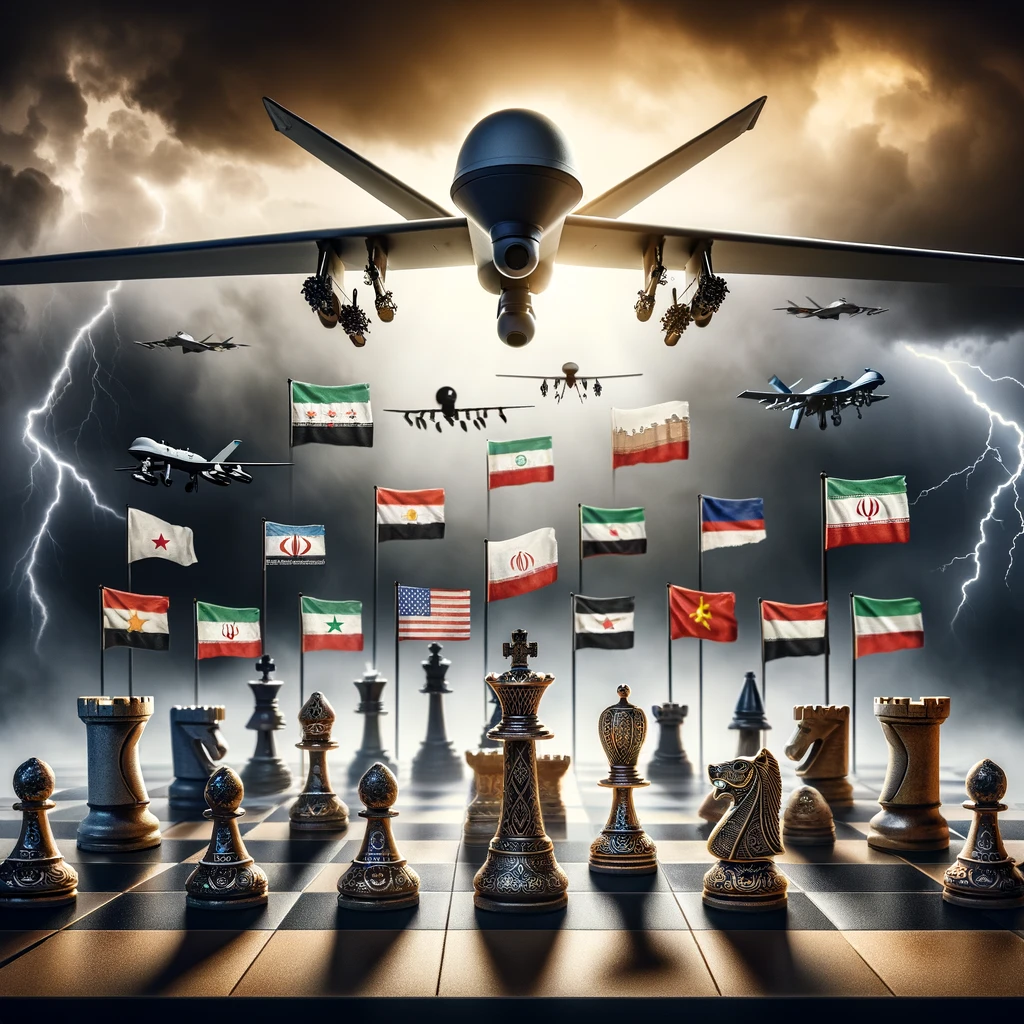
In a move that rattled the precarious balance in the Middle East, a drone attack left three US soldiers dead in Jordan, prompting a stern US retaliation. This incident escalated tensions and spotlighted the intricate web of alliances and hostilities in the region.
The Eagle strikes back
Responding with precision and might, the United States launched over 85 airstrikes across Iraq and Syria, targeting the shadowy operatives of the Islamic Revolutionary Guard Corps (IRGC) and their allied militias. This marked a significant escalation, with the US directly challenging the backers of these militias, signaling a new chapter in the confrontation between the US and Iran.
The specter of casualties and condemnations
In the aftermath of the devastating airstrikes, a grim tableau unfolded, leaving no room for optimism. The strikes claimed the lives of at least 29 militants, with Syria alone reeling from the repercussions. However, the impetus behind these strikes extended beyond retribution. The strikes were designed to severely hamper the operational proficiency of the Islamic Revolutionary Guard Corps (IRGC) and its affiliated proxies.
As the ramifications of these actions continue to exert their influence on the diplomatic arena, the international community is wrestling with the complex and far-reaching consequences. The delicate equilibrium between upholding national sovereignty while simultaneously confronting malevolent forces has transformed into a precarious tightrope walk fraught with potential hazards.
The response of Iraq and Iran to the airstrikes underscores the complex dynamics at play. Their indignation stems from the infringement on their territorial integrity, an affront that cannot be easily dismissed. The potential fallout from this incident is a stark reminder of the intricate web of allegiances and enmities that shape the region.
The dilemma of direct confrontation
In a significant deviation from prior strategies, the United State’s direct targeting of the Islamic Revolutionary Guard Corps (IRGC) represented a bold and potentially perilous maneuver. This approach, while emphasizing the United States’ unwavering determination, also vividly illuminated the intricate dynamics of power politics in the Middle East. In this region, loyalties are fluid and the division between allies and adversaries is frequently indistinct.
The ripple effects of the airstrikes have been multifaceted. Some Iran-backed militias hinted at halting attacks on US forces, possibly indicating Tehran’s desire to de-escalate. However, the US remains on guard, prepared to respond to any threats against its personnel and interests. This stance underscores a grim reality: the road to peace in the Middle East is fraught with obstacles, and the specter of further escalation looms large.
The broader implications for regional and international security remain uncertain as the dust settles on the latest skirmishes. The US-Iran confrontation, set against the backdrop of the Israel-Hamas conflict, highlights the enduring challenges of achieving stability in a region where the echoes of drones and airstrikes reverberate, shaping the geopolitical landscape in unpredictable ways.
